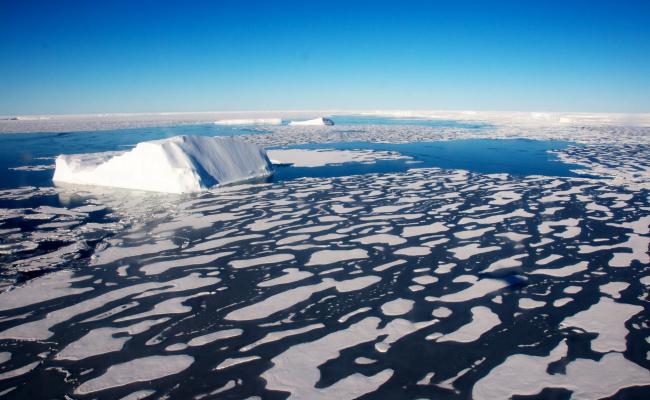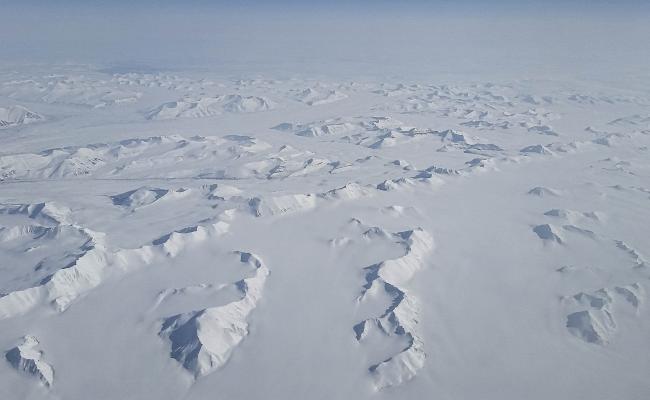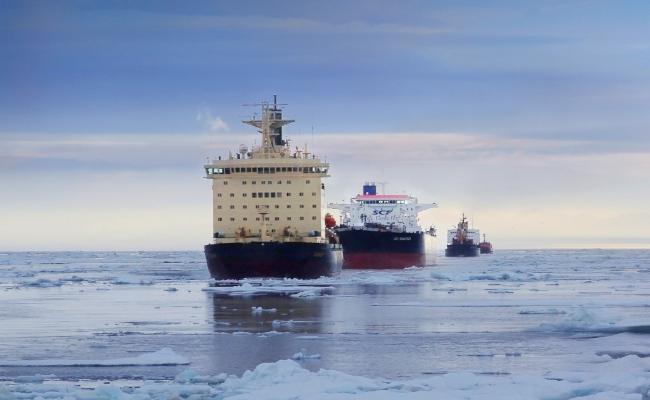Op-ed: Time To Work Together to Protect Arctic Biodiversity

When the ice breaks up, food is released for the polar cod, which in turn becomes prey for the Arctic seabirds that hunt along the ice edge. (Photo: Roy Mangersnes/WWF)
The opinions expressed here belongs to the author and do not represent the views of High North News.
Species around the globe are under threat - from mammals and birds to fish and reptiles. In fact, global wildlife populations have decreased an average of 69 per cent in the past 50 years. And the climate crisis is only making the problem worse.
In the Arctic, biodiversity loss and the climate crisis are more interlinked than any other place on Earth. Arctic temperatures have risen more than three times faster than the global average over the past 40 years. At the same time, industries are building new ports and roads, and drilling for oil and gas in the region, putting even more pressure on Arctic nature.
Underwater noise from shipping is making it harder for whales to navigate Arctic waters, and threats of oil spills from ships are putting marine ecosystems further at risk.
It is critical that we find ways to maintain a healthy, diverse and connected web of life in the Arctic, not only for the region but for communities around the world - because what happens in the Arctic doesn’t stay in the Arctic.
Adopting this framework was a critical first step.
An important first step toward safeguarding Arctic biodiversity:
At the UN Biodiversity Conference (COP15) in December 2022, almost two hundred countries adopted the Kunming-Montreal Global Biodiversity Framework (GBF). This historic action plan includes four goals and 23 targets to halt and reverse nature loss by 2030.
Amongst these is a commitment for countries to conserve 30 percent of the globe's lands, waters and oceans, as protected areas and acting in partnership with Indigenous Peoples and local communities.
In addition, they should also ensure participatory, integrated and biodiversity inclusive spatial planning and/or effective management processes beyond specifically protected areas.
Adopting this framework was a critical first step. But the next step is to translate this global commitment into national policy and action to bring about concrete changes - throughout the Arctic and globally. By next year, all governments must publish national targets that align with the GBF.
These National Biodiversity Strategies and Action Plans must be developed and implemented in consultation with Indigenous Peoples and local communities as well as civil society organizations, businesses and different government departments.
Also read
But vulnerable Arctic species and ecosystems often cross land and maritime boundaries and cannot be effectively protected without cooperation between States.
Protecting the entire Arctic Ocean:
Within their own maritime zones, coastal states have broad discretion in how these waters and their species will be used and protected. But two-thirds of the world’s oceans fall outside any coastal state maritime zones.
The high seas and the international seabed - also known as ‘areas beyond national jurisdiction’ - are also vulnerable to growing threats, including pollution, overexploitation, and the effects of our already changing climate. Unfortunately, there has been no effective, holistic tool to impose truly international measures to protect Arctic waters in areas beyond national jurisdiction - until recently.
On June 19th, a new global treaty to conserve and sustainably use marine biodiversity in areas beyond national jurisdiction was adopted, following nearly two decades of intense negotiations. Known also as the High Seas Treaty, this landmark legally binding instrument will facilitate the establishment of marine protected areas.
The next step is for all countries to sign, ratify and start implementing this new treaty. Given its significance for the Arctic Ocean, it only makes sense that the Arctic nations lead the way in bringing this agreement to life.
The time to find ways to work together is now:
Halting biodiversity loss and protecting globally significant Arctic ecosystems will require an ocean-wide approach that includes actions to designate marine protected areas both within and beyond national jurisdictions to ensure the entire ocean is used sustainably without harming biodiversity.
These protected areas must also be well connected to allow for the undisturbed movement of species. Together, the High Seas Treaty and the GBF could finally provide the legislative “teeth” needed to help bring this about in the Arctic.
The Arctic Council has been working to create marine protected areas in the Arctic Ocean for almost a decade. But it is time for renewed engagement to deliver on these global conservation targets. WWF has already proposed milestones for the Arctic Council’s work in this direction.
It is critical that we act without delay and work together to halt and reverse biodiversity loss and secure a nature-positive world. The rapid pace of climate change and nature loss means that there is no time to waste. We need more nature by 2030, not less.





